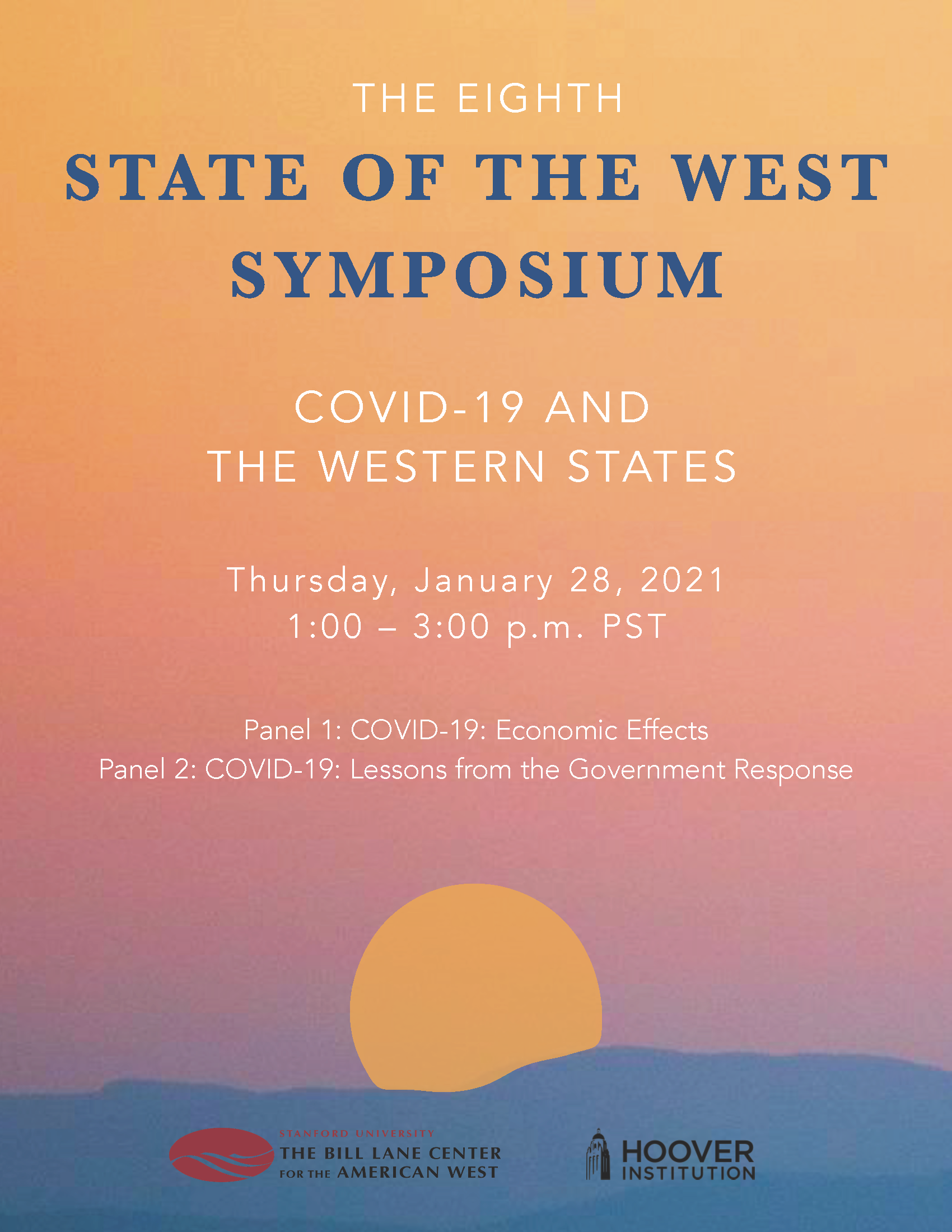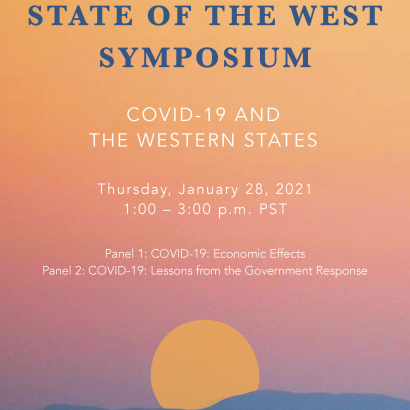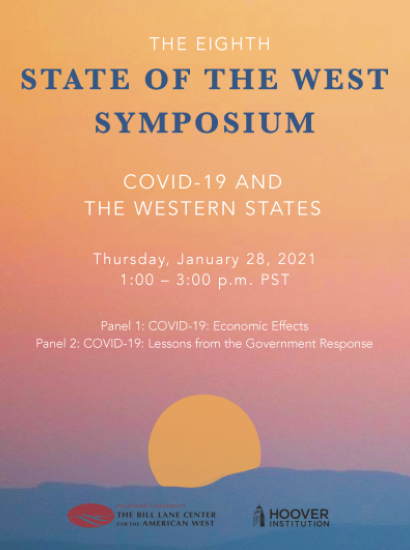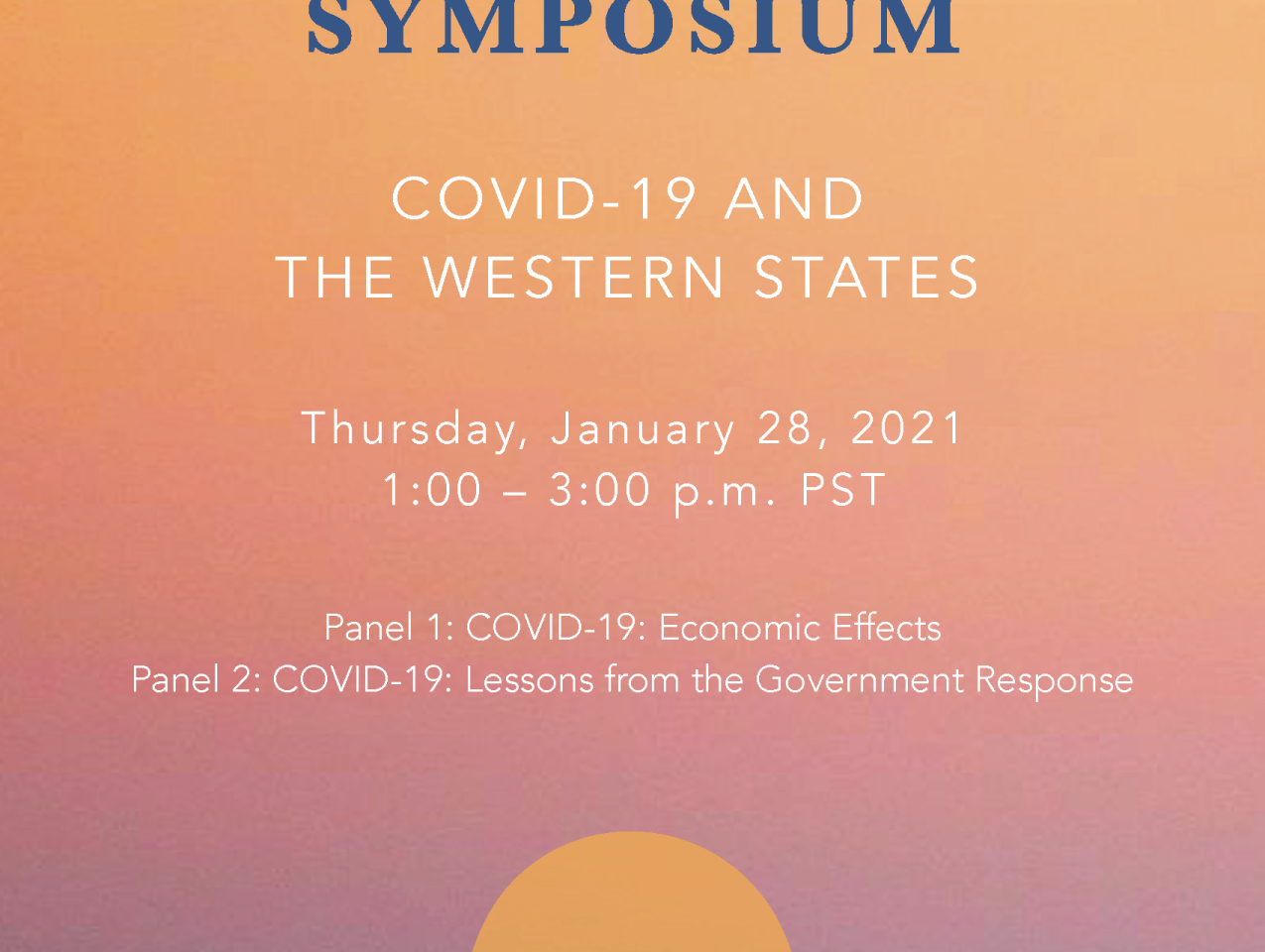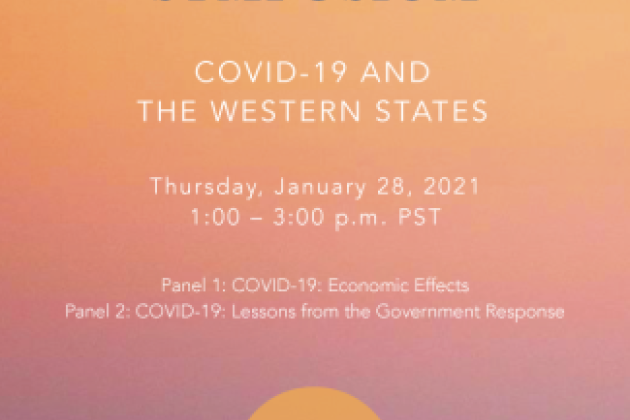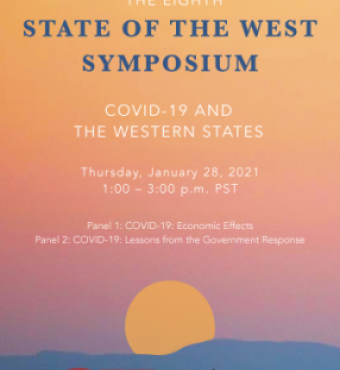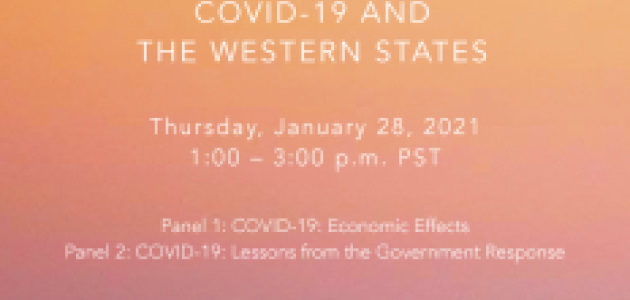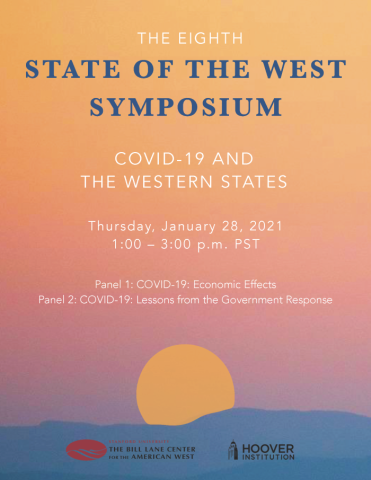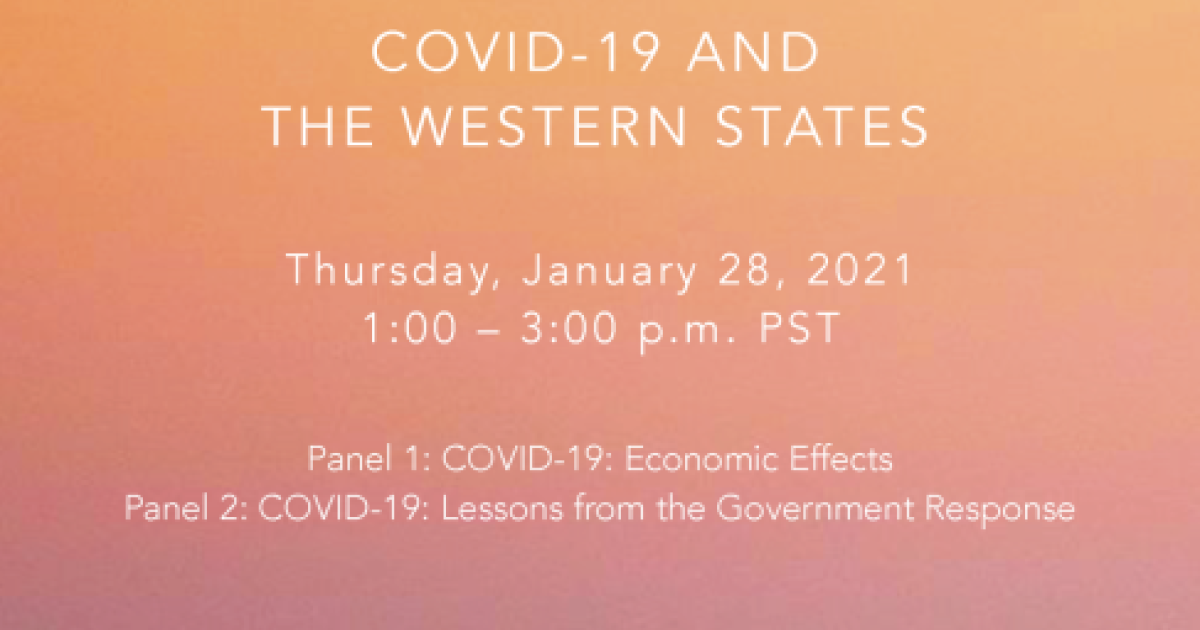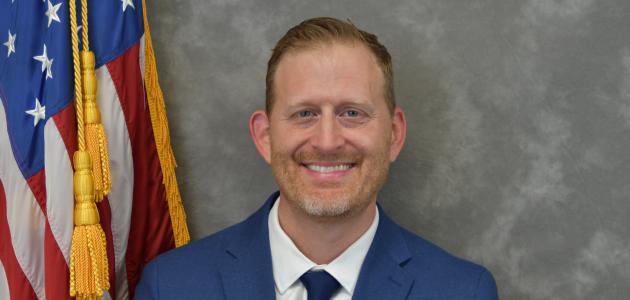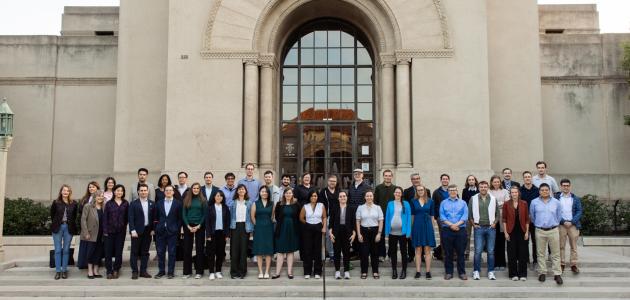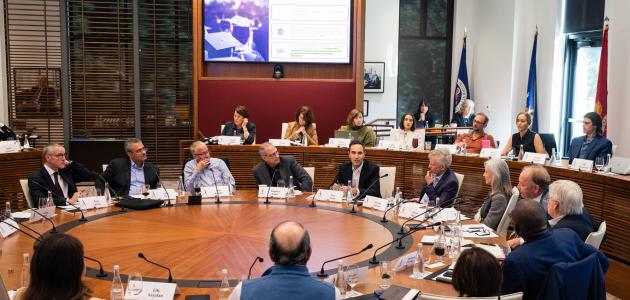Hoover Institution (Stanford, CA) – Hoover senior fellows provided analysis of COVID-19’s impact on the public health and economies of America’s western states in a two-part symposium copresented by the Hoover Institution and Stanford’s Bill Lane Center for the American West.
George P. Shultz Senior Fellow John B. Taylor began the first session by describing what he called “the stampede” of companies away from California’s Silicon Valley to states such as Texas where businesses and individuals can experience lighter tax and regulatory burdens. In California, top earners are charged an income tax of over 13 percent, and those in the income bracket earning between $40,000 and $57,000 incur a rate of 8 percent. By contrast, Texas does not levy income or sales tax. The Lone Star State assesses high property taxes; however, these rates are offset by lower home prices relative to those in the Golden State.
Similarly, Taylor noted, California has some of the most restrictive regulations, including those related to land use. These tax and regulatory burdens, compounded by statewide lockdowns and the rise of technology that enables remote work, has led tech titans such as Oracle and Hewlett-Packard to leave the state. In addition, Facebook has permitted half of its employees to telecommute permanently. Other companies are following suit. Taylor asserted that, accordingly, the case should be made for states to reduce these impediments for job creators.
Taylor’s remarks were followed by a presentation by Paul and Jean Hanna Senior Fellow Eric Hanushek, about how yearlong school closures have negatively impacted the nation’s future economic growth.
Hanushek estimated that as a result of learning loss from March 2020 to January 2021, students will see a reduction of 6 to 9 percent in their lifetime income. Consequently, the United States will lose 3 to 4 percent of its GDP, or $28 trillion over the next century. He added that these were the most optimistic estimates.
Hanushek explained that the best strategy in making up for this learning loss is to make schools better than they were before the pandemic. Such improvement would emphasize teaching students on an individual basis and assigning educators to settings where they best perform, whether in person or remote.
“Just returning to 2019 will not erase the losses that have been suffered and already accrued,” Hanushek argued.
The first session was concluded by Arizona’s budget chief, Matt Gress, who discussed how COVID-19 impacted his state’s economy. He explained that while Arizona has been negatively affected by the virus, it still, along with most western states (except for California), lost fewer jobs compared to the rest of the country.
The largest share of Arizona’s unemployment came from the leisure and hospitality sectors. These workers represent 40 percent of the unemployed compared to just 6 percent during the global financial crisis of 2008.
Gress maintained that despite the COVID-19 recession, Arizona’s revenues have remained resilient, because of a favorable business environment and the state’s large share of reserves. These factors have enabled the state to maintain adequate spending on essential government services, including education.
“We will have the largest dollar amount of total funds, adjusted for inflation, on a per-pupil basis, flowing into schools in the history of the state,” Gress said.
The second session, chaired by Senior Fellow Morris Fiorina, began with Milbank Senior Fellow Niall Ferguson offering a comparative analysis of COVID-19 relative to previous pandemics, including the Spanish Flu of 1918–19 and the Asian Flu of 1957–58.
Ferguson explained that the Spanish Flu was the far deadliest of the three pandemics to date. The disease killed more than 39 million people, or at least 2 percent of the world’s population. However, because it overlapped with the First World War, the economic consequences of the two events were difficult to separate. The Asian Flu was deadlier than COVID-19 has been and afflicted a broader section of the population (particularly young people), and yet had no discernable consequences for the economy.
“The economic costs of COVID-19 will have been much greater, when it’s over, than the economic impact of these previous disasters,” Ferguson observed.
Ferguson attributed the third wave of COVID-19 cases in the western United States, most notably in the Los Angeles area, to policy makers’ inability to stop the disease in its tracks early on. He noted how Taiwan and South Korea effectively integrated technology and partnered with the private sector in a comprehensive strategy that included widespread testing, contact tracing, and enforced quarantines.
“We must respond much more rapidly to an incipient crisis,” Ferguson stressed.
Neal Woodbury, professor of molecular sciences at Arizona State University, gave the final presentation, which provided an overview of Arizona’s public health response to COVID-19. Woodbury said that the state’s health department was unprepared for the pandemic because, in part, it lacked the capacity to broaden access to testing and high-quality health care.
Woodbury explained that in contrast to high caseloads statewide, Arizona State University experienced low levels of infection among its faculty, staff, and student body. ASU, in effect, formed a bubble where students felt obligated to adapt their behavior, including measures such as social distancing, wearing masks, and limiting types of activities in which COVID-19 could rapidly spread. He noted that cases on campus started to increase after the holidays, when students returned from environments that were less structured and conditioned to deal with the disease.
“Being able to get a group of people that care about each other, and giving them a very simple set of rules and saying ‘This is how you deal with [COVID-19],’ that actually works really well,” Woodbury said.







